It's estimated that approximately 65 percent of Americans have at least one automated or "smart" home device in their homes, with the most common being smart speakers, thermostats, and lighting. These devices offer a lot of convenience by allowing you to manage your home remotely, maximize your home security, and even increase your home's energy efficiency.
You can take the hassle out of managing multiple home automation devices by installing a smart hub in your home. A smart hub allows you to link all of your smart devices to one control panel and control all of them in one place.
But how do you choose the right smart hub for your home and devices? Well, there are a few things you need to know to make the best choice. In this blog, we'll discuss:
- The ways a smart hub communicates with your devices
- The types of technology a smart device can have
- How to choose the best smart hub based on your devices
If you're looking for the savings, convenience, and control that you get from automating your home, call the experts at Ackerman Security. We've been protecting and modernizing Atlanta homes for 50 years, and we've got the right smart home technology for you! Call us at 800.552.1111 or schedule a free instant security quote today.
Smart Device Protocols and Communication
Before you can understand the different smart hub devices, you'll need to understand how smart devices communicate with each other. This is called a protocol. There are several different hardwired or wireless protocols a device can use to communicate with other devices and with a hub, including:
- X10
- Universal Powerline Bus (UPB)
- Insteon
- Z-Wave
- Zigbee
X10
X10 technology has been available since the 1970s. It's a simple, wired communication protocol that uses the existing electrical wires in your home and sends signals to other hardwired devices like lighting and your security system motion sensors.
Universal Powerline Bus (UPB)
UBP is very similar to X10. It is also a hardwired communication that uses your home's existing electrical wires to communicate between smart devices. However, it is considered more reliable than X10, andis faster at sending signals between devices.
Insteon
Devices that use an Insteon protocol use a mix of your home's electrical wires and wireless radio frequency technology. Insteon offers extended range wireless communication that's fast and is known for being easy to pair devices to one another. More than 200 smart devices currently use the Insteon protocols, including thermostats, cameras, lighting dimmers, and light switches.
Z-Wave
Z-Wave communication is found in more than 3,000 smart home devices, including smart outlets, door and window locks, garage door openers, door sensors, and thermostats. This protocol is entirely wireless and allows device signals to hop from one device to the next across a network that can support more than 200 devices. It has a very long range meaning that devices can be as far as 100 meters apart and still maintain communication.
Zigbee
The Zigbee protocol is also completely wireless and forms a network of smart devices like Z-wave. While it can support thousands of devices in a single network,it operates at a higher frequency, making it vulnerable to interference by your home's WiFi network or signals coming from other appliances in your home. About 2,500 smart home devices use the Zigbee protocol, including lighting, motion sensors, and fire sprinkler systems.
Smart device technologies
Now that you have a basic understanding of how smart devices communicate with one another, let's discuss the technology found in your smart devices.
Wifi
Many smart devices have WiFi connectivity making it easy to connect to your home's WiFi network. This also means that they should easily communicate with the other WiFi devices in your home. The good thing about having a lot of WiFi based devices is that you can get an internet-based smart hub that links them all together. This also makes it easy to access them online or on a mobile app.
One of many drawbacks to consider regarding WiFi devices is that having too many of them on one network can slow down your internet service. This can negatively impact your computer internet speeds and things like your internet-based television services (cable, Netflix, Hulu, etc.). WiFi devices also require a lot of power to operate and can drain the batteries in your smart hub or smartphone where you access the app.
Bluetooth
Like WiFi, many smart home devices also have Bluetooth technology. Bluetooth does not have as wide of a range as WiFi, but it is more energy-efficient and won't deplete your phone or smart hub batteries as much as WiFi. If you have a lot of Bluetooth devices in your home, the short range means you'll need a smart hub if you want to access them outside of the normal Bluetooth range.
Thread
One final technology to consider is for people with Nest products. Thread is an internet-based technology that is found in the Nest brand of devices and can securely link hundreds of them to one another. Thread requires low amounts of energy to operate and is completely wireless.
Choosing a smart hub based on your devices
When you choose a smart hub for your home, you'll need to consider the types of automated devices you want to control. What protocols do they use? Are they WiFi-based or Bluetooth? Do you have a mix of devices in your home?
Based on your answers to these questions, you can explore several types of hubs, including:
- Smart hubs
- WiFi Mesh Hubs
- Voice Assistant Hubs
- Hub-Free Systems
Smart Hubs
The good news is that many general smart hubs can support multiple protocols. This means you don't have to limit the types of devices you get to automate your home. A versatile hub can support devices from many brands, including Honeywell, Ecobee, GE, PhillipsHue, and Ring. These smart hubs can also be voice-controlled with Alexa and Google.
WiFi Mesh Hubs
Another smart hub option is called a WiFi Mesh hub. These hubs work with most device protocols, support WiFi and Bluetooth devices, but they also serve as a WiFi router and signal booster in your home. This type of hub does double-duty to make your home automation and internet service easier and more effective.
Voice Assistant Hubs
Voice assistant hubs like Amazon's Alexa, Apple's Siri, and Google devices can also serve as smart hubs. They usually take the form of a smart speaker and support WiFi devices and those with Zigbee protocols. These systems are popular and multi-functional, but they are not as easy to control as a mobile app since they rely on clear, concise voice commands.
Hub-Free Systems
Finally, you can consider a hub-free system. For a hub-free option, you'll need devices from the same manufacturer that can all connect via one branded mobile app. For example, Nest has a bundle of devices, including thermostats, cameras, doorbells, locks, and smoke alarms that work with a mobile app.
There is a lot to consider when deciding on a smart hub to manage your home's automated devices. It all boils down to what devices you currently have, what devices you plan to get, and how you wish to control them!
Are you ready for the experts at Ackerman Security to help simplify your home automation?
Upgrading the technology in your home doesn't have to be overwhelming. Trust the home automation experts at Ackerman Security to bring your home into the 21st century with compatible, helpful, and high-quality devices that integrate seamlessly. Call us at 800.522.1111 or go online and schedule your free instant security quote today.






